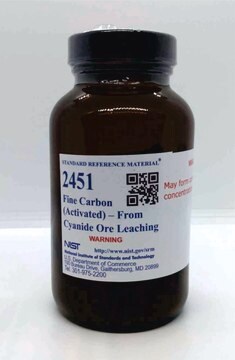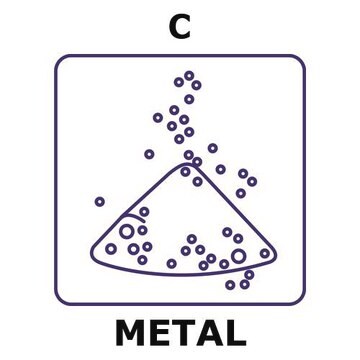633100
Carbon
nanopowder, <100 nm particle size (TEM)
Synonym(s):
Carbon
Sign Into View Organizational & Contract Pricing
All Photos(2)
About This Item
Recommended Products
form
nanopowder
Quality Level
surface area
>100 m2/g , BET
particle size
<100 nm (TEM)
InChI
1S/C
InChI key
OKTJSMMVPCPJKN-UHFFFAOYSA-N
Looking for similar products? Visit Product Comparison Guide
General description
Carbon nanopowder possesses excellent propertiessuch as a huge electroactive surface area, high thermal and electricalconductivity, biocompatibility, and high porosity. It is widely used in thefields of catalysis, adsorbents, electrochemical sensing, bioimaging,reinforcement filler, and renewable energy devices.
Application
Carbon nanopowder can be used:
- To fabricate anode material for a microbial fuel cell for bioelectricity generation.
- To prepare nanopowder embedded graphite paste matrix for electrochemical sensing of biologically active compounds such as raloxifene (anticancer drug).
- To enhance the electromechanical potential of polymer composites thatare used as actuators in telerobotics and medicine.
Preparation Note
Amorphous materials formed by laser techniques.
Storage Class Code
11 - Combustible Solids
WGK
WGK 3
Flash Point(F)
Not applicable
Flash Point(C)
Not applicable
Choose from one of the most recent versions:
Already Own This Product?
Find documentation for the products that you have recently purchased in the Document Library.
Customers Also Viewed
Electrode Materials for Lithium Ion Batteries
Kam KC and Doeff MM
Material Matters, 7(4) (2012)
Edge-carboxylated graphene nanoflakes from nitric acid oxidised arc-discharge material
Salzmann CG, et al.
Journal of Materials Chemistry, 20, 314-319 (2010)
I N Kurchenko et al.
Mikrobiolohichnyi zhurnal (Kiev, Ukraine : 1993), 75(3), 12-23 (2013-07-23)
The ability of soil and endophytic strains of P. funiculosum to accumulate biomass under cultivation conditions in media containing carbon sources from mono- to polysaccharides has been studied. It has been shown that the most favorable carbon sources for the
Patrick J McCormick et al.
Biomedical instrumentation & technology, 47(4), 347-355 (2013-08-08)
Common practice when validating the cleaning of medical devices is to employ clinically relevant test soils as a challenge to the cleaning process. During use, medical devices may come into contact with a variety of materials that are difficult to
Energy policy: A low-carbon road map for China.
Zhu Liu et al.
Nature, 500(7461), 143-145 (2013-08-09)
Articles
Electrode Materials for Lithium Ion Batteries
Our team of scientists has experience in all areas of research including Life Science, Material Science, Chemical Synthesis, Chromatography, Analytical and many others.
Contact Technical Service



